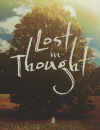Lost in Thought – March 2013
In the foreword to the first issue of Lost in Thought, published in July 2011, Editor-in-Chief Kyle Schruder explains that his modus operandi was to contact writers and visual artists, solicit either previously completed or new work, and pair images with fiction of 1500 words or less. If a writer submitted a finished story, Schruder approached an interested artist with the option to make a new work based on that story; if an artist submitted a completed photograph or drawing, Schruder approached an interested writer with the option to write a story based on that image. The pairings should “create something entirely new,” according to the current website. They should inspire the imagination. They should lead you, or permit you, to lose yourself in thought.
In the foreword to the first issue of Lost in Thought, published in July 2011, Editor-in-Chief Kyle Schruder explains that his modus operandi was to contact writers and visual artists, solicit either previously completed or new work, and pair images with fiction of 1500 words or less. If a writer submitted a finished story, Schruder approached an interested artist with the option to make a new work based on that story; if an artist submitted a completed photograph or drawing, Schruder approached an interested writer with the option to write a story based on that image. The pairings should “create something entirely new,” according to the current website. They should inspire the imagination. They should lead you, or permit you, to lose yourself in thought.
Most gratifyingly, in this fourth issue, they do, individually and collectively. Schruder is to be commended for the design of the magazine. It’s very beautiful to look at, and, as he intended, the pieces are thought-provoking. Even without their accompanying images they’re intriguing and imaginative, but with them, they’re wonderful.
For example, it’s impossible to know which came first—Brandon Keehner’s sharply pastel rhino head, with its wrinkles from chin to ear to two great horns shading from pink to blue to gray and its amusing striped birthday hat, the exact shape of the smaller horn? Or Pamela Davis’s terse poem “RSVP R.I.P.” chronicling “the count for the Extinction Ball,” with its references to “the last Javanese rhino,” Madagascar’s lemurs, and Crossover Gorillas? Either could have inspired the other. They’re a perfect fit, both just the right touch whimsical, the implications of both deadly serious.
Loren Arthur Moreno’s “House for Sale”—a staircase of text columns in which we read the story of a gay man, a real estate agent, assigned to sell the house in which his most recent partner abused him—is juxtaposed with Lisa Petrole’s haunting darkened photograph of a man whose ghostly yellow-pink head, blurred, is superimposed over his tilted (shamed? remorseful?) blue one. The couple in the story that are looking at the house are not well matched. Though the narrator can’t tell them what happened to him there on the stairs, or there where the mirror hung, he can urgently hope for the submissive wife a different outcome than his own.
But the pieces in this issue aren’t all political, not at all. “Nubs,” by Josh Denslow, is a glorious work of speculative fiction. In a world where everyone is born with incipient wings, and almost no one actually activates them, the narrator and her friend long to know what it would be like to have them. On her eleventh birthday, they find out. The photograph on the facing page: what’s in the background? The image we can identify is the back of a boy leaping—jumping? flying? He doesn’t have wings. He may or may not land safely. The image is perfect for the story, and the story is brilliant.
Bud Smith’s “Hot Rock 1964-1971: Side four” and Michael Seidel’s “There’s Just This” are achingly gorgeous short-shorts about teen love, hard love. The images that go with them (by, respectively, Corinne Perry and Ilyse Krivel) are stark, haunting, and dramatic. The character in Smith’s story is in a gay relationship, but she’s irresistibly drawn to the male narrator. Perry illustrates Smith’s story with two photographs of a young woman’s face, first surrounded by flowers in the center of a vinyl record disk, then, on the next page, splashed in glitter in a circle of its own. In both photographs, the girl’s eyes are closed. Her world is larger than it looks. In the same way, though very differently, Krivel’s photographs illustrating Seidel’s prose poem lamenting a first (?) lost love, emphasize the interiority of the experience: “There are garbage cans all along the beach,” Seidel’s speaker says. “I get up early, grab fish by the tails and skip them like stones along the lake’s green surface. // Wonder if the fishes’ dizziness is as great as mine. All these months and later still. // I wouldn’t wish it on my worst enemy.” Krivel’s three photographs show beach scenes at dusk, the shadows long, the waves quiet. No people anywhere.
In every case, as in these examples, the juxtapositions create, as Schruder intended, something more than either the story or the image. They are lovely, brief, and memorable. They leave me lost in thought.
[www.lostinthoughtmag.com]





